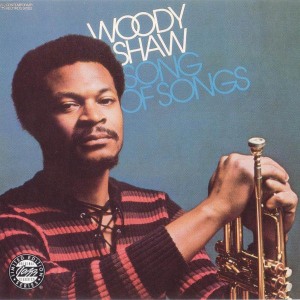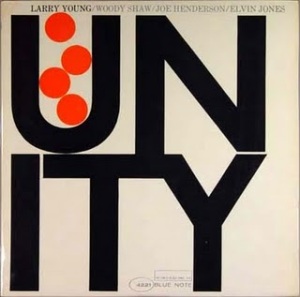One of the things I have found intriguing about Woody’s use of pentatonics is the way he combines different pentatonic scales together in various rhythmic groupings. There has been much written about how pentatonic scales can be used over certain chords (for example, see Jerry Bergonzi’s Pentatonics book) – however, I have recently been thinking about situations where two pentatonic scales a certain interval apart could be used.
- Pentatonic scales a semitone apart – This is a classic device of ‘side-stepping’, creating tension by slipping out of key with the underlying harmony before resolving back in the home key. Woody uses this idea frequently – for example, see his solo on If where the entire solo is built around the juxtaposition of the ‘inside’ B flat pentatonic scale and the ‘outside’ B pentatonic scale. Pentatonic scales a semitone apart can also be used over a V-I resolution creating a tritone substitution – for example, a D flat pentatonic can be played over a G7 chord resolving to either a C or D pentatonic over the Cmaj7 chord.
- Pentatonic scales a major 2nd apart – These can be played over a maj7 #11 chord, the two pentatonic scales combined actually create a lydian mode (for example, C and D pentatonic scales create C lydian mode).
- Pentatonic scales a minor 3rd apart – These can be used over a dominant 7th flat 9 chord – for example, the linking of C and E flat pentatonics will include all the notes of the C mixolydian mode plus an Eflat (the flat 9). The four pentatonic scales coming from the same diminished axis (eg. C, Eflat, F# and A) can also be combined together in the same way the four triads from a diminished scale can be combined over a dominant chord. Finally, switching between pentatonic scales a minor 3rd apart can be a way of playing outside, superimposing a fresh set of chords.
- Pentatonic scales a major 3rd apart – It was Woody’s linking of the E flat and B pentatonic scales in tunes such as What Is This Thing Called Love and Rosewood that got me thinking about how various pentatonics can be linked together. In both cases, he uses scales a major 3rd apart to leap outside the changes, possibly influenced by the Giant Steps changes of John Coltrane. He also uses common tones to link the two scales together – for example, the major 3rd of the C pentatonic becomes the root note of the E pentatonic a major 3rd up. The idea can be extended to include all pentatonic scales on the same augmented axis (eg. C, E and G#).
- Pentatonic scales a perfect 4th apart – Woody also uses this idea frequently as these two pentatonics combined create a very strong dominant – tonic effect, strongly outlining a tonality. Sometimes this outlined tonality fits with the underlying harmony, sometimes it doesn’t.
- Pentatonic scales an augmented 4th apart – These can be combined over a dominant chord, alternating between a simple, unaltered dominant sound and a heavily altered tritone substitution sound.
This covers all possible combinations as pentatonic scales a perfect 5th apart have already been covered talking about those a perfect 4th apart, those a major 6th apart by those a major 3rd apart and so on. All of these combinations have their uses, and I have been practicing the ability to link scales together at will and in a variety of rhythmic groupings as Woody did. I do, however, still have a lot of work to do to get these down.


